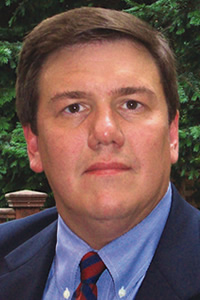Ted Niblock
BioCycle December 2014
When I began working on climate change policy in the mid-2000s, consensus for action was high. A Republican president had just signed the Energy Policy Act of 2005, turning the Renewable Fuel Standard into law, and “cap and trade” was a compromise policy offered by Republican senators. By the end of 2009 momentum for climate policy had completely stalled, and previously bipartisan policies became and remain highly controversial.
What was most startling about the sudden drop in support was it did not relate to particular policies to mitigate climate change. Somewhere between 10 to 15 percent of people polled changed their minds, in less than 18 months, as to whether climate change even existed. This is only the most extreme example of a well-documented relationship between economic hardship and denial of climate science.
The ability of people to actually change their belief to fit their preference is sometimes referred to as a “disassociation.” For the past five years, this disassociation has been a major obstacle to climate change mitigation policy. Previous dips, however, have rebounded with economic recovery, and we have every reason to hope the same will happen as our slow recovery continues. If attitudes change back, there could be an opportunity for more meaningful policies.
Why do I make this prediction? In the year 2000, 72 percent of Americans polled said they worried “a great deal” or “a fair amount” about global warming, at a time when the U.S. unemployment rate was 4 percent. By the time the unemployment rate had climbed to above 6 percent in 2004, the same response number was down ten points to 61 percent. When unemployment hit its high during the recession in 2010, this number was down to 52 percent. In fact, by reading the responses to the Gallup tracking poll on this question, one can accurately predict the contemporaneous unemployment rate based on the responses. With unemployment falling below 6 percent recently, concern over climate change is back up to 58 percent.
The polls eliciting the above responses did not ask if Americans should make sacrifices to slow global warming (something rational people might change their opinions about in hard times) nor did it ask if it was a national or global problem, or some other sort of choice with the threat of global warming being a constant. Some other polls do ask those questions and are addressed below, but for right now the lesson is simple, obvious, but sometimes overlooked: people stop worrying about the environment during hard economic times.
For those interested in a review of this phenomenon by serious academic scholarship, I recommend Professor Lyle Scruggs’s article, “Declining public concern about climate change: Can we blame the great recession?” (Scruggs and Benegal, 2012). He not only details every example of this startling correlation, but also notes why other possible explanations such as extreme weather events and rising conservative politics are not as compelling. Changes in the unemployment rate are far and away the only variable which explains all sudden shifts in the polls, and in 2009 it already seemed pretty obvious that was what had happened.
The Biogas Lens
All this has had (and will have) a huge impact on renewable energy, and specifically biogas, policy. As I already alluded to, the relatively prosperous 2000s saw two major pieces of renewable energy legislation. In addition to the Energy Policy Act of 2005, the Energy Independence and Security Act of 2007 was enacted. Between these two laws the biogas sector has gained a great deal of opportunity, most notably due to the Renewable Fuels Standard. Since the huge unemployment spike of 2008-2009, no major pieces of federal renewable energy legislation have passed, despite the presence of a Democratic president and at times a Democratic Congress as well.
Things are improving, however. With unemployment heading down below 6 percent, responses regarding concern for the climate should rise. Even when asked what they would prefer, slight harm to economic growth to help the environment or slight harm to the environment to help economic growth, more respondents (50%) in a March 2014 Gallup poll said they would risk slowing economic growth to help the environment, while only 41 percent said they would prefer to risk some harm to the environment to push economic growth. In 2011 those numbers were reversed, with the environment losing out at 36 percent and economic growth winning at 54 percent. In 2011 the unemployment rate was just under 9 percent; today it is 5.9 percent.
Most recently, an October 2014 report by the Yale Project on Climate Communication found that 67 percent of Americans support setting strict carbon dioxide emission limits on existing coal-fired power plants to reduce global warming and improve public health. Those polled were told explicitly to assume that that the cost of electricity to consumers and companies would likely increase from changes to reduce overall carbon emissions, even though there is no evidence to support this.
Of course, the choice between protecting the environment and growing the economy is a patently false one, as most if not all BioCycle readers know. This is, nonetheless, the most prevalent concern I encounter when talking to people about our industry: that support for renewable energy means harm to economic growth. So while we try to explain to everyone that a green economy would grow just as fast as a brown one, and that there is absolutely no evidence that renewable energy stifles economic growth, it is good to know that, today, more Americans are willing to side with the environment in the imaginary choice they don’t have to make. Let us hope a more opportune policymaking environment follows.
Ted Niblock develops biogas projects for NewAg Development.
Reference
Scruggs, L and S. Benegal. Declining public concern about climate change: Can we blame the great recession? Journal of Global Environmental Change, Vol. 22, No. 2, 2012, p. 505–515.













